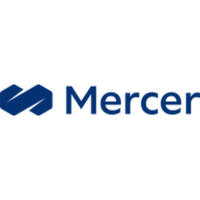Taking steps towards financial wellness

A growing number of employers recognise the importance of promoting financial wellness in the workplace.
45% of employees say financial matters are the number one cause of stress in their lives, presenting an opportunity for employers to help to reduce such pressures and promote wellbeing and indeed productivity in the workforce.
Complementing existing programmes designed to promote physical and mental health and supplementing current pension provisions, financial wellness benefits aim to tackle the stresses and strains money places on employees.
There is also growing evidence that an effective financial wellness programme has the potential to improve employee engagement with the wider benefit package, which in turn improves the return on investment for employers.
Since employees value positive action by their employer – almost 80% of employees are not satisfied with their employers’ efforts to help with managing their finances and 71% say they are more likely to stay with an employer that offers a good benefits package – adding financial wellness to the mix is an effective tool in attracting and retaining the best talent.
A holistic approach
Given the diversity of today’s workforces, there is a huge range of financial objectives employees need to meet. In line with the Consumer Financial Bureau we group these into four areas: control over day to day spending; capacity to absorb a financial shock; the freedom to make important life choices; and being on track for the future.
To build a financial wellness programme to effectively meet these objectives, employers need to follow three steps. First is to understand their workforce; second analyse the efficacy of existing employee benefits programmes and identify any gaps; third establish a roadmap for implementing the right benefits at the right time.
This provides a holistic framework within which to build an effective financial wellness programme.
Know your workforce
Traditional benefits programmes often assumed similarities between individual employees based on age or earnings. Today we have access to better data and more sophisticated behavioural science which enables us to recognise differences between employees and cater to their specific needs.
It is critical employers appreciate the diversity within their workforce and carry out surveys which identify the variety of financial objectives. We have developed pulse surveys which require just 90 seconds of an employee’s time to complete, and which cover the four areas of financial wellbeing.
Using the latest behavioural finance techniques it is possible to glean considerable information from the surveys which not only form the basis on which benefits programmes can be built but also provides a yardstick against which the efficacy of financial wellness initiatives can be measured in the future.
Making the case
Analysing this new employee data allows a deeper understanding of what individuals need when it comes to financial wellness but employers will also gain from revisiting existing benefits and ensuring these still meet their objectives.
A benefit audit can help identify where gaps in provision lie and remove undervalued or irrelevant options in addition to ensuring that all new financial wellness additions complement the existing range of benefits.
However, the idea is not to spend more on employee benefits but to spend smarter and redirect money towards those areas that will improve employee wellbeing and drive productivity and engagement.
Creating a roadmap
Effective implementation of a wellness programme requires a structured plan. This enables employers to prioritise the most relevant benefits whilst also building a rounded programme which all employees will value. For example, identifying specific pain points for employees, such as help with buying a new home or retirement planning, for which specific solutions could be introduced.
Using a structured roadmap allows employers to work with their employees and gauge reaction to the programme. Employees can engage with the new benefits gradually rather than suffering information overload.
Finally, a well thought out roadmap allows for appropriate budgeting with incremental introduction of benefits which helps spread the cost.
Summary
Introducing a financial wellness programme is about improving outcomes for both the employer and the employee.
However, effective programmes require a level of structure and coordination. Employers need to start by understanding their workforce and the diversity of financial challenges they face.
Data can help to design the most appropriate financial wellness programme that works with existing benefits. A benefit audit makes sense here to identify gaps and eradicate unnecessary spend.
Finally, starting small and having a clear timeline for further implementation means the financial wellness programme can be introduced in the most cost-efficient and valuable way possible.
We are already seeing the improvements such programmes can make to employee wellbeing and the business’ bottom line. The key to a successful financial wellness programme is taking a holistic, structured approach which incorporates the needs of the employer and of their workforce.
THREE STEPS FOR IMPLEMENTING AN EFFECTIVE FINANCIAL WELLNESS PROGRAMME
- Gather employee information and understand the workforce
- Analyse data to build a suitable and cost effective benefit package
- Create an implementation roadmap for successful and efficient roll out
Find out more by clicking here.
Eve Read is head of proposition, DC & Financial Wellness at Mercer.
This article was supplied by Mercer.







